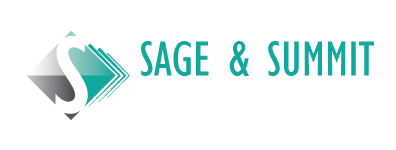Lock down, re-enter, lock down, hybrid work, work from home, zoom, zoom, and more zoom, supply chain disruption, online everything, DEO (Diversity, Equity & Inclusion), Pivot, Post-Covid Resignations and all the rest of it delivered unprecedented challenges to leadership. The workplace and business ecosystems have been altered indefinitely and continue to serve up change at an accelerating pace.
Agile or adaptable leadership?
The world is changing and so are the ways in which we work. In order to survive, adaptability is key. It’s not enough to be flexible anymore; you need to be able to change direction, or even your entire strategy at any given moment. The question becomes: how do I remain adaptable?
The answer lies in understanding what it means to lead by example and create an environment where people are willing and eager for change because they know it will benefit them as well as the company. Leaders who can demonstrate this trait will find that their employees want nothing more than to prove themselves worthy of following such a visionary leader. Adaptability has become a necessity during the pandemic, however, without adaptability, even a good change can turn sour. Adaptability is your change muscle, and like all muscles, one that requires regular exercise to remain open to change, and as an expert – anticipate change, pro-actively respond to it, or even make it happen.
How to become and remain adaptable:
Develop a keen learner mindset:
Carol Dweck writes about a fixed or a growth mindset. Developing the habit of curiosity and looking for new meaning or insights in everything is at the core of being adaptable. When a new circumstance is thrown our way, we have the option of approaching it from an unmovable point of view or a learner mindset, EG:
| The unmovable point of view | The adaptable mindset |
| Fixed “A challenge is a test that I pass or fail, based on my inherent abilities. If I am not good at something, I will not do well.” | Growth: “I can learn to do anything I want. Challenges and mistakes are opportunities for learning and development.” |
| Expert: I should already know the answer. I should perform during a challenge by having all the answers. | Curious: I am going to ask a lor of questions, explore and discover. I can learn a lot from trying something new. |
| Scarcity: A challenge typically involves limited resources, hard choices, and tradeoffs that must be made. | Abundance: A challenge is typically a potential win-win to be discovered. |
Practice wellbeing:
The relationship between wellbeing and resilience has been under the microscope for the past 18 months.
A McKinsey study revealed that looking after physical and mental health was related to a 21% increase in productivity, and a 46% improvement in employee engagement.
Making well-being a priority is necessary for sound decision-making skills, and dealing with uncertainty. When we are exhausted our minds shift to a scarcity mindset which shuts down adaptability. Paying attention to body mind and spirit is necessary: sleep, exercise., nutrition, mindfulness and connection are the “nutrients’ that facilitate the possibility of resilience and adaptability.
Be grounded in your purpose and values:
Our purpose and values offer a north star to determine what really matters, where the boundaries are, and where our focus should turn, it helps us to avoid running from one urgency to another when pressure increases.
Learn the adaptability lens:
Our brains are wired to create meaning. It scans the circumstances in front of us to relate it to the past in order to predict what will happen next. That is why people default to autonomic behaviours under stress such as taking control or playing the victim card. To counteract living in the rearview mirror, make learning a life habit.
Build and maintain deep connections:
Strong interpersonal relationships also bolster adaptability, since human beings need meaningful connections to survive and thrive. These community networks can even affect longevity, research shows that social connectivity is the most predictive indicator of longevity.
Research has found that deep and diverse connections that provide social support are fundamental elements of the rich tapestry feeding our well-being and learning, especially during periods of uncertainty and heightened stress.
In a nutshell, we are human beings, not human doings. Our complex and hyper connected world often drives high performers toward the human doing space where we eventually burn out, and lose our drive, passion and vigor. The discipline to remain in the being space, to stop doing and make self-care and connections the most important aspect of our existence will actually bolster our creativity and productivity.
Our next blog – How do we take the adaptability formula organization wide?

